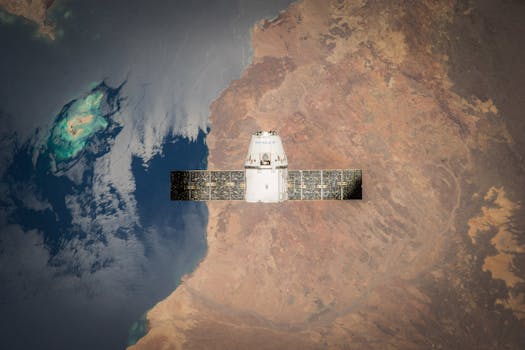High-Tech Horizons: The Evolution of Earth-Orbiting Technologies for Observation
The evolution of earth-orbiting technologies has revolutionized the field of observation, enabling us to monitor and study our planet like never before. From satellite imagery to space-based telescopes, these technologies have opened up new avenues for scientific research, environmental monitoring, and commercial applications.

High-Tech Horizons: The Evolution of Earth-Orbiting Technologies for Observation
High-Tech Horizons: The Evolution of Earth-Orbiting Technologies for Observation has been a game-changer in the field of observation, allowing us to study and monitor our planet in unprecedented detail. The development of earth-orbiting technologies has been a gradual process, with significant advancements in recent years. In this article, we will explore the evolution of these technologies and their applications in various fields.
The first earth-orbiting satellite, Sputnik 1, was launched by the Soviet Union in 1957, marking the beginning of the space age. Since then, numerous satellites have been launched for various purposes, including communication, navigation, weather forecasting, and observation. The observation satellites have played a crucial role in understanding our planet and its processes, enabling us to monitor climate change, track natural disasters, and manage natural resources.
History of Earth-Orbiting Technologies
The history of earth-orbiting technologies dates back to the 1960s, when the first observation satellites were launched. The Tiros 1 satellite, launched by NASA in 1960, was the first satellite to capture images of the Earth’s weather patterns. The subsequent launch of the Landsat 1 satellite in 1972 marked the beginning of the era of satellite imagery, allowing us to study the Earth’s surface in detail. The Landsat program has been ongoing for over four decades, providing valuable data on land use, land cover, and environmental changes.
The 1980s saw the launch of the Shuttle Radar Topography Mission (SRTM), which created high-resolution topographic maps of the Earth’s surface. The SRTM data has been used in various applications, including geological mapping, natural hazard assessment, and environmental monitoring. The 1990s witnessed the launch of the NASA’s Earth Observing System (EOS), a comprehensive program aimed at understanding the Earth’s systems and processes. The EOS program has included several satellites, such as the Terra, Aqua, and Aura, which have provided valuable data on the Earth’s climate, weather, and natural resources.
Applications of Earth-Orbiting Technologies
The applications of earth-orbiting technologies are diverse and widespread. In the field of environmental monitoring, satellite imagery has been used to track deforestation, monitor ocean health, and detect natural disasters such as earthquakes and hurricanes. The satellite data has also been used in climate modeling, allowing us to predict future climate scenarios and develop strategies for mitigation and adaptation.
In the field of natural resource management, earth-orbiting technologies have been used to monitor land use, track water resources, and manage agricultural production. The satellite data has also been used in disaster response and recovery, providing critical information on damage assessment and relief efforts. The commercial applications of earth-orbiting technologies are also significant, with satellite imagery being used in industries such as insurance, finance, and marketing.
Future of Earth-Orbiting Technologies
The future of earth-orbiting technologies is promising, with several new satellites and missions planned for launch in the coming years. The NASA’s Artemis program, aimed at returning humans to the Moon by 2024, will also include several earth-orbiting satellites to study the Moon’s surface and atmosphere. The European Space Agency’s (ESA) Copernicus program will continue to provide high-resolution satellite imagery for environmental monitoring and natural resource management.
The private sector is also playing a significant role in the development of earth-orbiting technologies, with companies such as Planet Labs, DigitalGlobe, and SpaceX launching numerous satellites for various applications. The increasing use of small satellites, also known as CubeSats, is also expected to revolutionize the field of earth-orbiting technologies, providing low-cost and high-resolution satellite imagery for various applications.
In conclusion, High-Tech Horizons: The Evolution of Earth-Orbiting Technologies for Observation has been a remarkable journey, enabling us to study and monitor our planet in unprecedented detail. The applications of earth-orbiting technologies are diverse and widespread, and the future of these technologies is promising, with several new satellites and missions planned for launch in the coming years.





